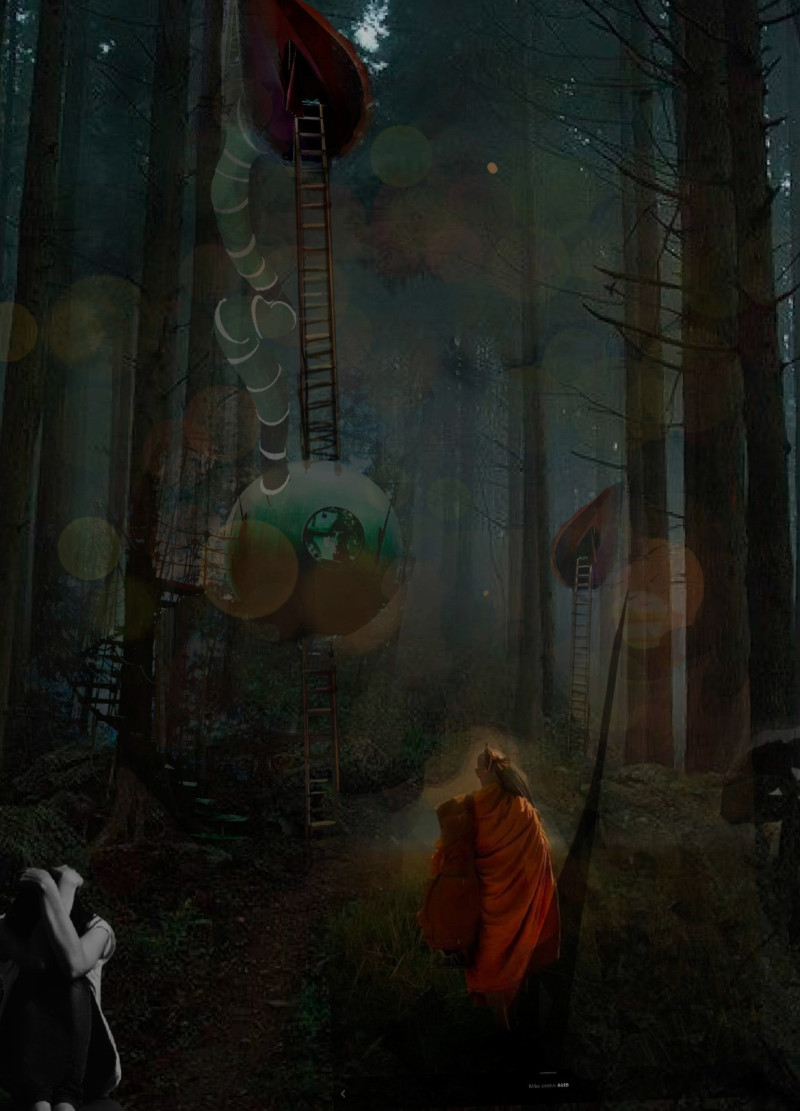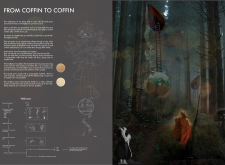5 key facts about this project
The installation is characterized by its thoughtfully organized spatial configuration, where raised structures resembling trees evoke both the natural environment and serve as metaphors for growth and connection to the earth. These tree-like formations facilitate a journey through the site, where visitors ascend ladders that connect the various components of the installation. This ascent symbolizes a personal journey of overcoming challenges, providing a sense of movement towards healing.
Materiality plays a crucial role in the project, with sustainable and natural materials central to the design philosophy. The use of wood, specifically sustainable timber, introduces warmth and a feeling of comfort that resonates with the forest setting. In addition to wood, the project incorporates compostable materials, reinforcing a commitment to sustainability and promoting the idea of life continuing beyond death, as bodies contribute back to nature. The structures also include solar panels, reflecting an environmentally friendly approach by harnessing renewable energy, along with water collection systems that further emphasize resource management within the installation.
One of the unique design approaches in "From Coffin to Coffin" is its deep integration with the surrounding environment. The project does not stand apart from the forest; instead, it blends harmoniously into the landscape. By doing so, it honors the cultural and historical significance of Aokigahara, allowing the installation to be a respectful and sensitive response to the location's complex narrative. Additionally, the use of symbolic elements throughout the design amplifies its themes. The connection between the structures and the idea of rebirth through the cycle of life is made apparent, inviting visitors to contemplate their own experiences and the choices they face.
The interactive nature of the installation encourages engagement, allowing individuals to actively participate in their journey of reflection. The carefully designed paths lead visitors through moments of solitude and contemplation, fostering an understanding of personal struggle while promoting a sense of community and shared experience. The installation also highlights the importance of choice; the act of carrying a backpack provided at the beginning of the journey symbolizes the burdens we carry in life, allowing individuals to confront their realities with an intention to move forward.
Overall, "From Coffin to Coffin" is a thoughtful architectural response to sensitive social issues, blending design, materiality, and the natural environment to create a space for healing. The project stands out for its emphasis on sustainability and respect for cultural context while providing an opportunity for individuals to reflect meaningfully on their lives and choices.
For those interested in exploring the project further, reviewing the architectural plans, sections, and designs will provide deeper insights into how these essential elements come together to form a comprehensive narrative around life, death, and renewal.























